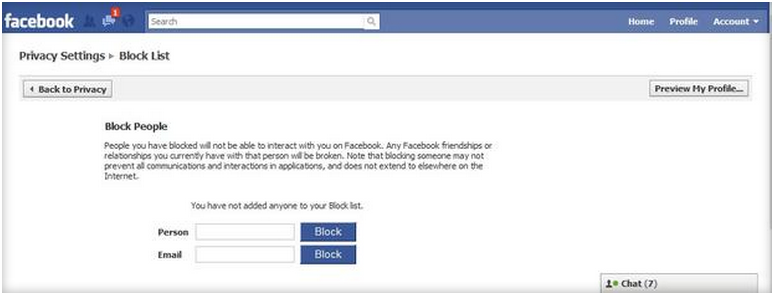Menu
Facebook offers security tips for teens, parents
The Facebook Safety Center spells out how to block unwanted posts, messages, and other contacts.
The Facebook Privacy Settings Block List lets you prevent specific names and e-mail addresses from contacting you.
Facebook brings families closer together. But as with any medium, Facebook is sometimes abused, occasionally to damaging effect.
The Facebook Privacy Settings options let you control who has access to your personal information. The page includes a Block List that prevents contact with the people and e-mail addresses you specify without their knowledge.
A welcome addition to Facebook's security arsenal is the new Safety Center that provides information specifically for children, parents, educators, and law enforcement. The Safety for Teens section addresses bullying, public bad-mouthing, and how to report abuse. (If you'd like to remove an unflattering photo posted by one of your "friends," Facebook will do so only if the image violates the service's Statement of Rights and Responsibilities.)
The Safety for Parents section of the Safety Center describes what to do if your child views inappropriate content on a Facebook page, how to help a child report abusive conduct, and how to delete an account of a child under the age of 13. Much of the information in this section parrots the entries on the Safety for Teens page, but it does include links to in-depth articles by Common Sense Media on security for teens online.
We need to monitor children living in the virtual world just as much as we watch after them in the real world.
The Facebook Privacy Settings options let you control who has access to your personal information. The page includes a Block List that prevents contact with the people and e-mail addresses you specify without their knowledge.
A welcome addition to Facebook's security arsenal is the new Safety Center that provides information specifically for children, parents, educators, and law enforcement. The Safety for Teens section addresses bullying, public bad-mouthing, and how to report abuse. (If you'd like to remove an unflattering photo posted by one of your "friends," Facebook will do so only if the image violates the service's Statement of Rights and Responsibilities.)
The Safety for Parents section of the Safety Center describes what to do if your child views inappropriate content on a Facebook page, how to help a child report abusive conduct, and how to delete an account of a child under the age of 13. Much of the information in this section parrots the entries on the Safety for Teens page, but it does include links to in-depth articles by Common Sense Media on security for teens online.
We need to monitor children living in the virtual world just as much as we watch after them in the real world.

